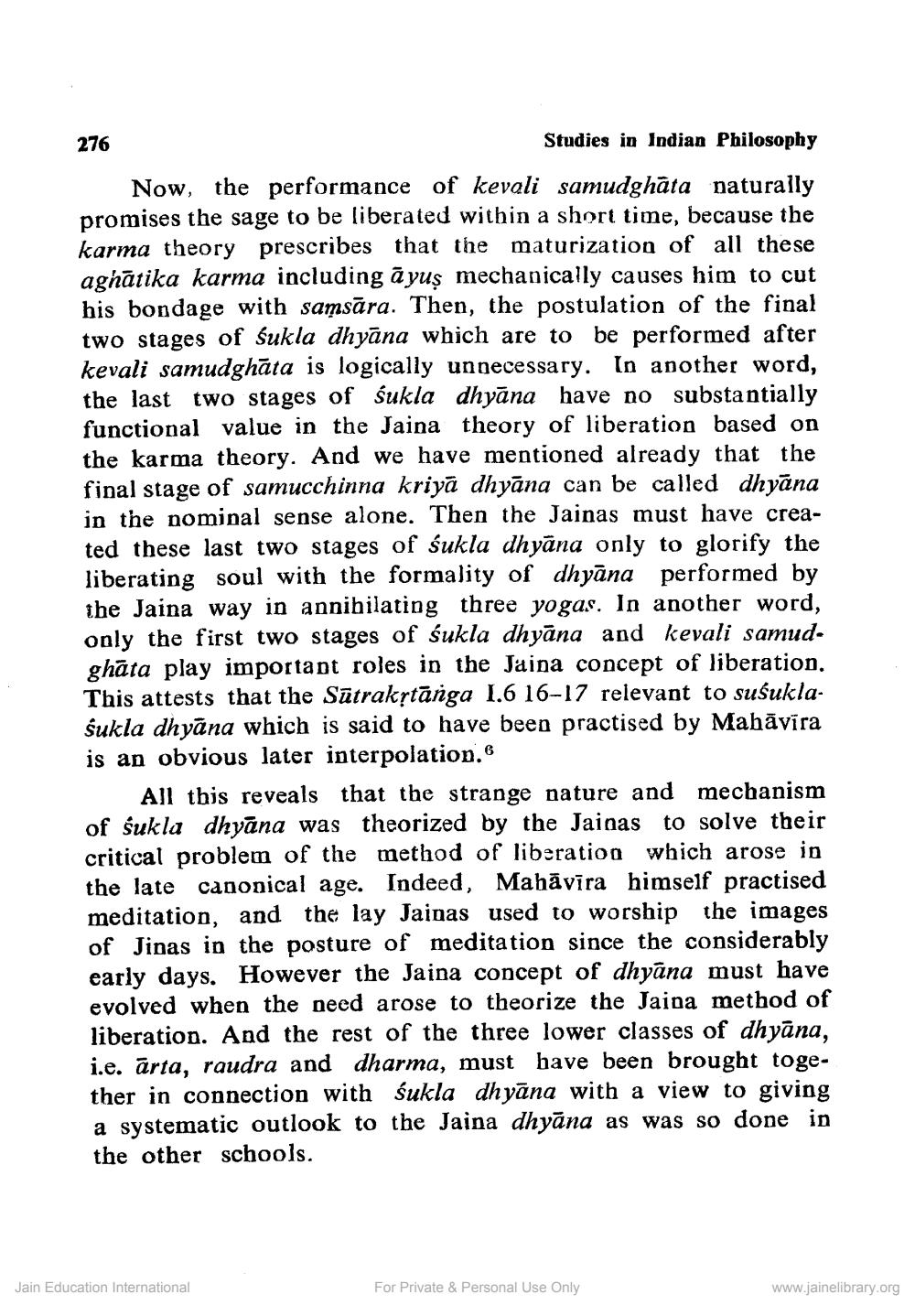________________
Studies in Indian Philosophy
Now, the performance of kevali samudghata naturally promises the sage to be liberated within a short time, because the karma theory prescribes that the maturization of all these aghatika karma including ayuş mechanically causes him to cut his bondage with samsara. Then, the postulation of the final two stages of śukla dhyāna which are to be performed after kevali samudghata is logically unnecessary. In another word, the last two stages of śukla dhyana have no substantially functional value in the Jaina theory of liberation based on the karma theory. And we have mentioned already that the final stage of samucchinna kriya dhyāna can be called dhyana in the nominal sense alone. Then the Jainas must have created these last two stages of śukla dhyana only to glorify the liberating soul with the formality of dhyana performed by the Jaina way in annihilating three yogas. In another word, only the first two stages of sukla dhyana and kevali samudghata play important roles in the Jaina concept of liberation. This attests that the Sutrakṛtānga 1.6 16-17 relevant to susuklaŝukla dhyana which is said to have been practised by Mahāvīra is an obvious later interpolation."
276
All this reveals that the strange nature and mechanism of ŝukla dhyana was theorized by the Jainas to solve their critical problem of the method of liberation which arose in the late canonical age. Indeed, Mahāvīra himself practised meditation, and the lay Jainas used to worship the images of Jinas in the posture of meditation since the considerably early days. However the Jaina concept of dhyana must have evolved when the need arose to theorize the Jaina method of liberation. And the rest of the three lower classes of dhyana, i.e. arta, raudra and dharma, must have been brought together in connection with śukla dhyana with a view to giving a systematic outlook to the Jaina dhyana as was so done in the other schools.
Jain Education International
For Private & Personal Use Only
www.jainelibrary.org




